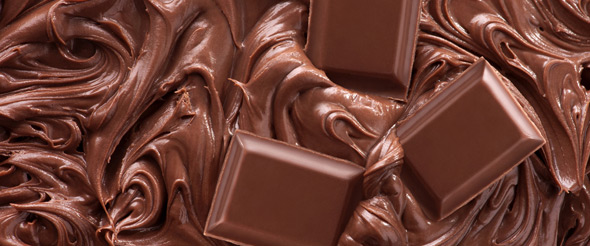 The chocolate production industry is one of the world’s most thriving industries, being estimated at roughly $100 billion per year. The treat, originally prepared as a drink in Mesoamerica, has inspired patisseries, restaurants, and entrepreneurs around the world. It has become a basis for desserts, savory sauces, and the creation of unusual flavors. It has been dissected scientifically and built up again to make the most of its crystal-forming abilities. Despite its widespread availability and antiquity, it shows no sign of wearing out its welcome. And as its antioxidant properties and mineral content continue to be unveiled to the public, the justifications for its consumption only increase. Though chocolate is so familiar and well-known to the United States population, many are not aware of the true differences and similarities between different types of chocolate, apart from their color and flavor.
The chocolate production industry is one of the world’s most thriving industries, being estimated at roughly $100 billion per year. The treat, originally prepared as a drink in Mesoamerica, has inspired patisseries, restaurants, and entrepreneurs around the world. It has become a basis for desserts, savory sauces, and the creation of unusual flavors. It has been dissected scientifically and built up again to make the most of its crystal-forming abilities. Despite its widespread availability and antiquity, it shows no sign of wearing out its welcome. And as its antioxidant properties and mineral content continue to be unveiled to the public, the justifications for its consumption only increase. Though chocolate is so familiar and well-known to the United States population, many are not aware of the true differences and similarities between different types of chocolate, apart from their color and flavor.
Dark Chocolate
Dark chocolate is typically made of cocoa, cocoa butter, and sugar. It is often the best chocolate to use in baking brownies, soufflés, and pies, due to its powerful, rich, bitter-sweet flavor. It can also be a great basis for ganache, truffles, and mole sauce. At times its cocoa content is indicated on the packaging, typically ranging from 70%-99%. The higher the cocoa content, the more flavorful the chocolate, with the dominant difference often being extra bitterness in “darker” chocolate when compared to chocolate with low cocoa content. The more cocoa in the chocolate, the healthier it is, since most of the healthful compounds in chocolate originate from the cocoa. Since dark chocolate contains a higher percentage of cocoa than milk and white chocolates, it is considered the healthiest type of chocolate. Dark chocolate is also known as semisweet or bittersweet chocolate, depending on the amount of sugar it contains.
Milk Chocolate
Milk chocolate is similar to dark chocolate in terms of ingredients, but with a higher milk solids content. Whereas dark chocolate often contains no dairy products and must contain under a certain amount to be considered dark chocolate, milk chocolate, by definition, will contain some milk or milk solids. The added milk rounds out the bitterness compared to dark chocolate, yielding a smoother but less deep flavor. Milk chocolate is a great basis for ice creams, some chocolate desserts, and to add to baked goods such as cookies, adding sweetness and richness. It is often appreciated by children unaccustomed to the bitterness of dark chocolate, making it a good ingredient to use in preparing child-friendly desserts. This type of chocolate has also won over hearts in candy bars and other confections, but has less of a place in baking and less health benefits than dark chocolate.
White Chocolate
White chocolate is sometimes not categorized as “real chocolate” since it does not contain cocoa solids. A mixture of milk, sugar, and cocoa butter, white chocolate is fundamentally different than milk chocolate and dark chocolate. It can be used in almost any dessert, as well as savory dishes such as risotto and foie gras. It can also be caramelized in the oven, producing a golden confection with subtle caramel flavors. Due to its lack of cocoa, it has a light color and lesser nutritional properties compared to milk and dark chocolates.
Chocolate can be found in many forms. Its versatility comes from the ability of cocoa butter to take on six crystal forms, each with unique properties. As a result of these properties, for example, chocolate chips in cookies are relatively soft even when they cool, whereas truffles have a hard, crisp outer shell. The trick to making the most of chocolate is to understand how it works and to realize the span of its potential. Though working with it can get messy, its well-secured place as one of the United States’ favorite foods makes using it almost inevitable for food businesses offering desserts.
Chocolate connoisseurs often appraise chocolate in a similar fashion to wine. They appreciate the variety of flavors found in cocoa from different parts of the world, mainly in the form of dark chocolate, with contrasting properties inherited as a result of the differences in soil, water, and climate in each region. They take the manufacturers’ skills into consideration as well, judging the maker’s ability to alter and hone the flavors of the cocoa bean with different roasting and preparation techniques. As with wine, the quality and flavors in the chocolate used in cooking and baking will have a recognizable effect on the finished product. Whether using dark chocolate, white chocolate, or milk chocolate, venues should strive for the best quality and flavors for their purposes.
I’m really enjoying the design and layout of your website.
It’s a very easy on the eyes which makes it much more pleasant for me to come here and visit more
often. Did you hire out a developer to create your theme? Great work!